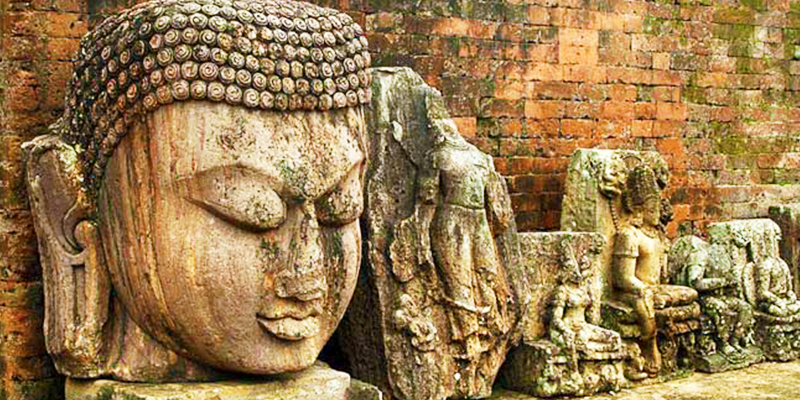

The Ceylonese chronicle, Mahavamsa and the 13th Major rock edict of Asoka reveal that the Kalinga War ( one of the ancient names of part of Odisha) in 261 BC was a major event in the history of Buddhism as the Mauryan king Asoka played a key role in the propagation of Buddhism in India and beyond after the great War. Odisha also preserves the evidence of the longest survival of Buddhism in India.
Lama Taranath, the Buddhist pilgrim from Tibet who wrote History of Buddhism in India in 1608 AD refers to donation to and repair of some viharas by Mukundadeva (d 1568 AD), which was more than three centuries after the destruction of Nalanda and Odantapuri in 1199-1201 by Bakhtiyar Khalji, the general of Mohammad of Ghor . More important is to note that the Census of 1911 records as many as 1833 persons in Orissa professing their faith to be Buddhism (Sarao 2006).
There are at least 120 archaeological Buddhist sites in Odisha, some of which, such as Lalitgiri and Udayagiri and Langudi, continued uninterruptedly for more than a millennium. These sites contain temples, viharas, caityas, votive stupas, mantras, dharanis and most importantly, gods, goddesses, Buddhas, Bodhisattvas, so rich and varied that have few parallel in any other region of India. Literary and archaeological data point out that Odisha was one of the earliest centres of Vajrayana Buddhism from which the Buddhist mandalas, mandala art and architecture spread to Tibet, Java, China and Japan. There is much evidence to make the claim that the earliest archaeological evidence of Tibetan and Shingon Buddhism is found from Odisha.
Odisha is one region which had had the earliest and longest uninterrupted association with Buddhism in India. Tapussa and Bhallika, two merchants from Ukkala (Utkala, Odisha) were “the first in the world to become lay-disciples of the Buddha” (Mahavagga, 1st Khandaka).
www.tribaltoursinindia.com © All Rights Reserved, 2021